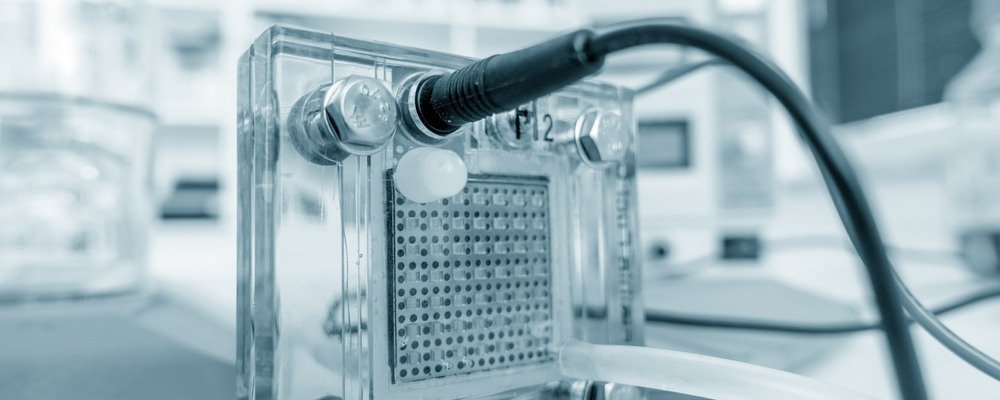The development of alkaline anion exchange membranes (AAEMs) is important to the global sustainable hydrogen energy landscape, like the principal component of alkaline exchange membrane water electrolyzers (AEMWEs) and alkaline exchange membrane fuel cells (AEMFCs). AAEMs are polyelectrolytes transferring hydroxide anions (OH–), which include cationic functional groups and a polymer backbone.

Image Credit: luchschenF/Shutterstock.com
However, the strong nucleophilicity and basicity of OH– anions lead to alkaline instability for AAEMs. For instance, organic cations and transition-metal-ligand-complexes, which are broadly utilized, are susceptible to degradation by Hoffman elimination, nucleophilic substitution, and cationic redox during the service period.
The aforementioned alkaline instability has become the main aspect that limits the lifetime of a product. So far, it is still difficult to incorporate appropriate cationic functional groups into the molecular chain to enhance the alkaline stability of AAEMs further.
Prof. Wei You and Assoc. Prof. Yu Wang from the Institute of Chemistry of the Chinese Academy of Sciences (ICCAS) and Prof. Wenjuan Zhang from Beijing Institute of Fashion Technology (BIFT) developed and designed olefin polymers with [2.2.2]cryptand of complicated metal cations as functional cationic groups for AAEM applications. This study was recently published in the Angewandte Chemie International Edition journal.
[2.2.2]Cryptand has strong binding with Ba2+ (Ks over 109 M–1 in water at 25 °C) and possesses good chemical stability. Cryptand groups could be grafted onto polyolefin backbones by post-polymer alteration or presented directly by ring-opening metathesis polymerization. For over 1500 hours, the barium [2.2.2]cryptate complex ([Cryp-Ba]2+) AAEMs with polyolefin backbones stay stable upon treatment at 60 °C in 15 M KOH. However, the conductivity of commercial membrane PiperION A80 is quickly reduced after 360 hours by more than 90%.
In AEMWEs, this cryptand-modified polyolefin ion exchange membrane was also efficiently incorporated. The effect of cation binding strength was explained further by tracking the subsequent performance changes depending on the switching anode feeding solution.
This study proves that the binding constant between the anchoring group and the metal is a key condition to identify whether the polyelectrolyte membranes are real AAEMs and offers a fresh idea to sort out the issue of alkaline stability in AAEMs.
Journal Reference
Zhang, H., et al. (2023). Alkaline‐Stable Anion‐Exchange Membranes with Barium [2.2.2]Cryptate Cations: The Importance of High Binding Constants. Angewandte Chemie International Edition. doi.org/10.1002/anie.202217742